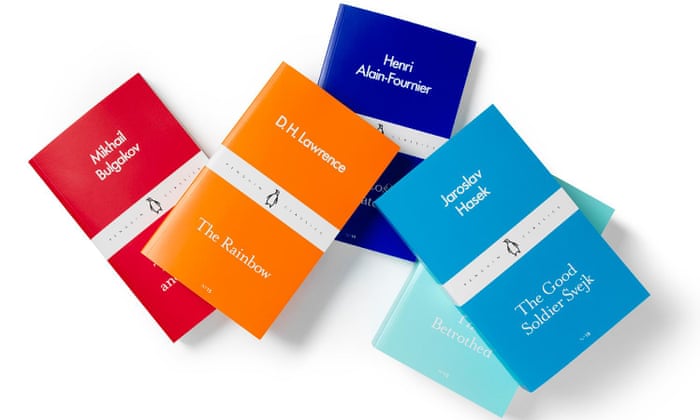
"Modern" classics get older all the time: H.G. Wells went out of copyright this year. Now- sexed up covers and the profit margins on no-royalty books are driving a new vogue for old lit.
Henry will be ready when you want to trade up to the first editions.
Imagine you have a sudden burning desire to read David Copperfield, Charles Dickens’s favourite of all his novels. Thanks to Project Gutenberg, you could read it for nothing online but, correctly reasoning that it would be tedious to scroll through 600 pages on a screen, you go to a bookshop. There you find that David Copperfield is available as an Everyman Classic hardback, a Penguin Classic paperback, an Oxford University Press paperback and a Vintage Classic paperback, all designed in pleasing formats, heftily branded and with paintings or artful imagery on their covers, along with introductory essays by university professors, a chronology of Dickens’s life and a scholarly trove of explanatory notes.
Which do you choose? Why that one? Because it has the most beautiful cover? Because it looks more “collectable” for your library shelf at home? Because the colour scheme matches the decor of your living room? Because the introduction is by Professor John Sutherland, say, rather than Norman Carpet from Nowheresville? Think carefully before you choose, because British publishers are putting lots of money and energy into guessing what the new generation of classics buyers wants. This year, the four major contenders – Penguin, OUP, Everyman and Vintage – are experimenting with radical new looks, designs and branding strategies, in the hope of snaring their long-term loyalty.
There’s a lot at stake. From Aristotle to Zola, the classics market is huge. According to Tom Tivnan of the Bookseller magazine, annual sales of classic texts currently stand at £25m, an increase of 10% since 2010. There’s been a noticeable upswing in the number of publishers doing the classics, whether offering cheap editions (like Wordsworth Classics, £1.99 each) or super-deluxe editions on quality paper stock (like the Pushkin, Alma, Persephone and Fitzcarraldo houses). It’s as though British publishing has suddenly realised that anyone can flog a work that’s out of copyright – usually 70 years after the author’s death – and they don’t have to pay royalties. This year, publishers have been ghoulishly marking the anniversaries of authors who died in 1946, especially HG Wells (August 13) and Damon Runyon (December 10). And classics publishers can make a lot from TV or film adaptations: the bestselling classic this year is War and Peace, with 54,000 copies sold by 10 publishing houses, compared with 12,000 last year. Many classics also see a gratifying spike in sales if they appear on the reading lists of GCSE, A-level or BA syllabuses...
No comments:
Post a Comment
We enjoy hearing from visitors! Please leave your questions, thoughts, wish lists, or whatever else is on your mind.